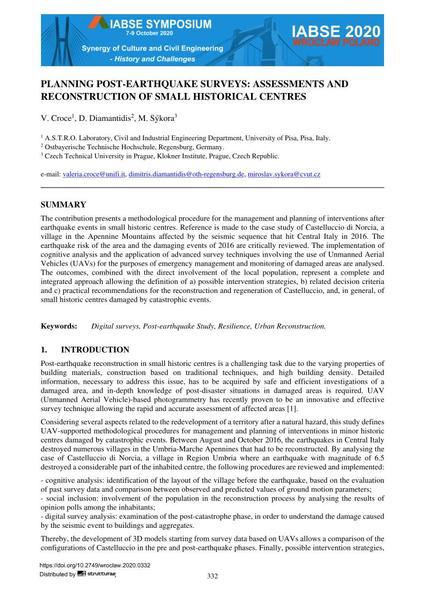Planning Post-Earthquake Surveys: Assessments and Reconstruction of Small Historical Centres

|
|
|||||||||||
Détails bibliographiques
| Auteur(s): |
V. Croce
D. Diamantidis M. Sýkora |
||||
|---|---|---|---|---|---|
| Médium: | papier de conférence | ||||
| Langue(s): | anglais | ||||
| Conférence: | IABSE Symposium: Synergy of Culture and Civil Engineering – History and Challenges, Wrocław, Poland, 7-9 October 2020 | ||||
| Publié dans: | IABSE Symposium Wroclaw 2020 | ||||
|
|||||
| Page(s): | 332-339 | ||||
| Nombre total de pages (du PDF): | 8 | ||||
| Année: | 2020 | ||||
| DOI: | 10.2749/wroclaw.2020.0332 | ||||
| Abstrait: |
The contribution presents a methodological procedure for the management and planning of interventions after earthquake events in small historic centres. Reference is made to the case study of Castelluccio di Norcia, a village in the Apennine Mountains affected by the seismic sequence that hit Central Italy in 2016. The earthquake risk of the area and the damaging events of 2016 are critically reviewed. The implementation of cognitive analysis and the application of advanced survey techniques involving the use of Unmanned Aerial Vehicles (UAVs) for the purposes of emergency management and monitoring of damaged areas are analysed. The outcomes, combined with the direct involvement of the local population, represent a complete and integrated approach allowing the definition of a) possible intervention strategies, b) related decision criteria and c) practical recommendations for the reconstruction and regeneration of Castelluccio, and, in general, of small historic centres damaged by catastrophic events. |
||||
